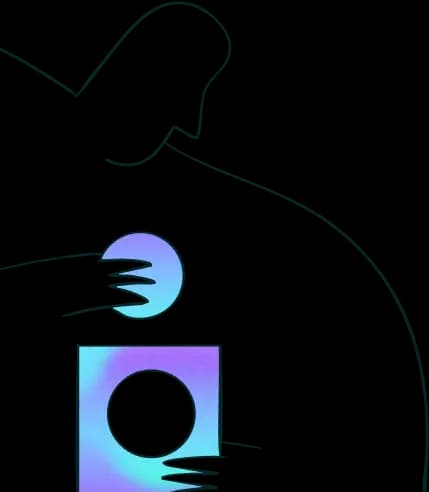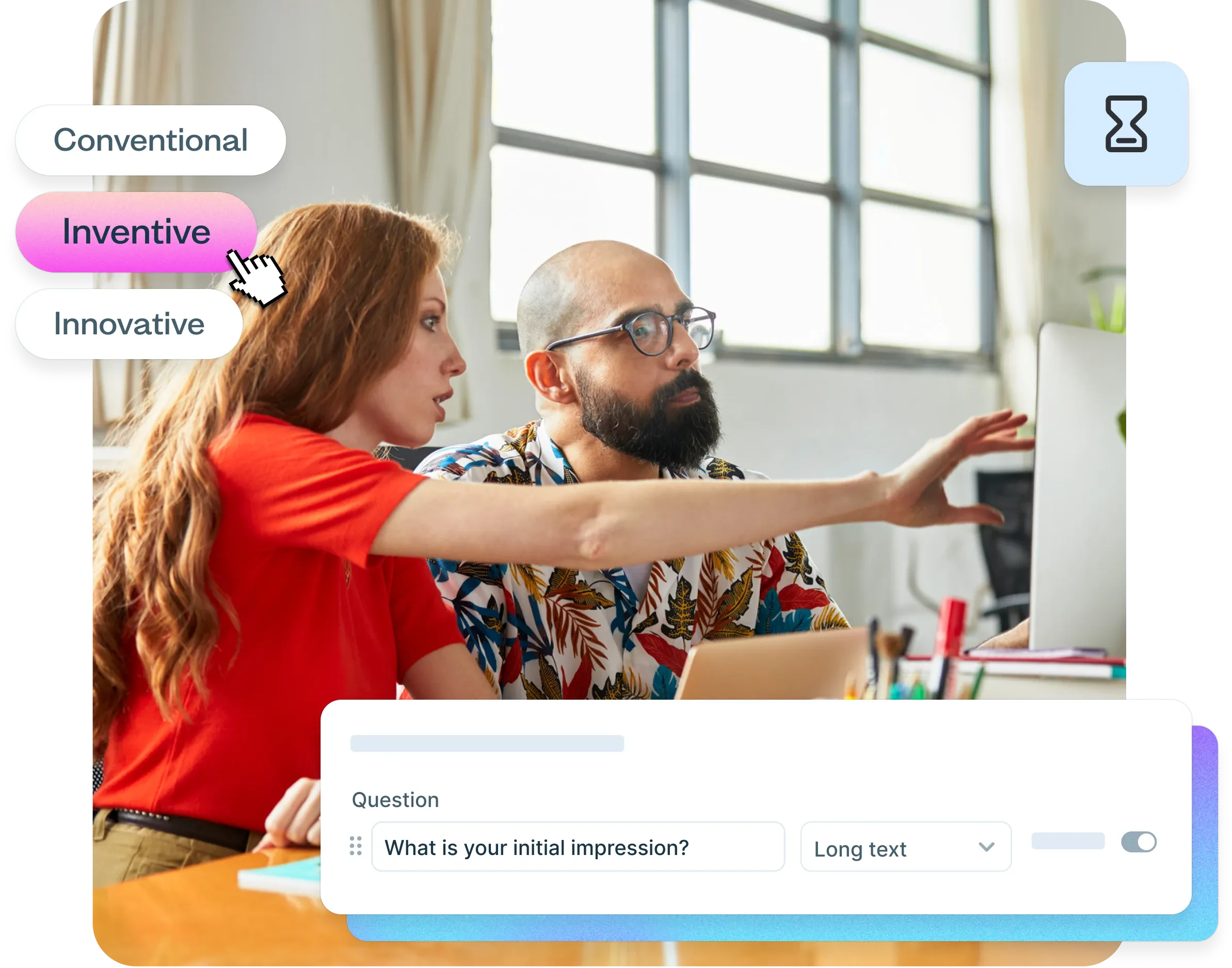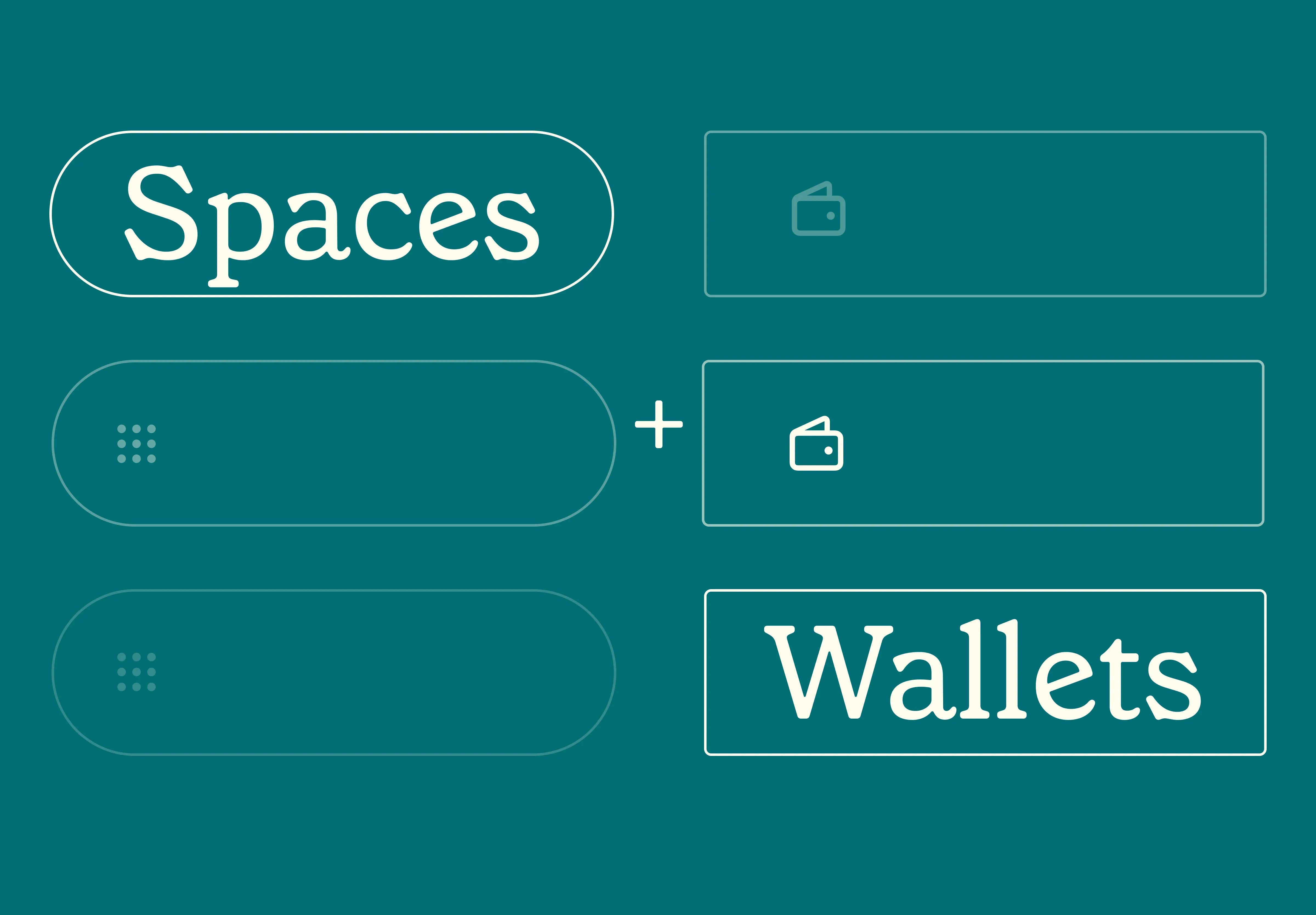01 Aug 2025
|14 min
Design ops
Discover how design ops streamlines design workflows, clarifies roles, and boosts collaboration. Learn key steps to implement design operations effectively.

Design ops addresses common barriers in design teams – like scattered communication, inefficient processes, and unclear roles – and brings them together under a cohesive framework. By aligning people, tools, and workflows, design ops helps everyone work more smoothly toward shared goals.
In this article, we’ll explore design ops as a strategic approach to optimizing your design workflows. We’ll discuss how we can collaborate across teams, streamline processes, and bring clarity to complex design challenges.
What is design ops?
Design operations, aka design ops, refers to the orchestration and optimization of people, processes, and tools to scale design effectively. This includes staffing strategies, maintaining design quality, and ensuring alignment across teams. Citing NN/g research, design ops is crucial for driving consistent, human-centered outcomes in dynamic, fast-paced environments.
Picture a design process where inefficiencies and miscommunication are rare. Design ops helps create this reality by bringing together the different parts of your design workflow.
Roles and responsibilities are clearly defined, streamlined workflows maximize efficiency, and intuitive tools empower designers to focus on their core strengths.
Validate your designs
Ready to integrate user feedback into your design ops process? Start free user testing with Lyssna today.
Brief history and evolution of design ops
While the term “design ops” gained traction in the early 2010s, its roots can be traced back to earlier movements emphasizing consistent, high-quality outcomes in creative processes. Over time, these principles converged into what we now recognize as design ops, a structured framework that supports design teams at scale.
Design ops emerged as a structured approach to address these challenges and help design teams grow sustainably.
Why design ops matters in design workflows
If you’re following an agile workflow and collaborating across multiple departments, strong design ops foundations keep everyone aligned. By creating clear processes, shared documentation, and regular feedback loops, it ensures each team member – whether they’re a designer, developer, or researcher – contributes seamlessly.
Efficiency
Streamlined processes, clear tools, and standardized communication channels remove roadblocks and wasted time, allowing designers to focus on high-impact work.
Improved collaboration and communication
Design ops fosters strong connections between designers, product managers, engineers, and other stakeholders, providing alignment and shared goals.
Consistent design deliverables
By establishing design systems and best practices, design operations helps maintain brand consistency and quality across all touchpoints.
Benefits of design ops
A good design ops strategy has many advantages for individuals, teams, and the whole organization. Here’s a roundup of some of the biggest benefits.
Individual benefits
Increased productivity and job satisfaction: Design ops facilitates smoother workflows, empowering designers to do what they do best – design.
Enhanced skill development: Through training and knowledge sharing initiatives, design ops supports continuous learning and skill development.
Stronger sense of belonging and community: Fostering a collaborative environment creates camaraderie and improves team morale.
Team benefits
Optimized project management: Clear roles, responsibilities, and communication channels create a more efficient and predictable design process.
Reduced rework and errors: Standardized practices and design systems minimize inconsistencies and costly reworks.
Improved cross-functional collaboration: Design ops bridges the gap between design and other departments, leading to better teamwork and shared ownership.
Organizational benefits
Enhanced brand consistency and recognition: Standardized design systems provide a unified brand experience across all platforms.
Increased design ROI: Design ops enables teams to work smarter and faster, driving greater value from design investments.
Improved product quality and user experience: Streamlined workflows and consistent designs leads to a better user experience and ultimately, increased customer satisfaction.
Improved product quality and user experience: Streamlined workflows and consistent designs have been shown to lead to a better user experience and, ultimately, increased customer satisfaction. According to the Nielsen Norman Group report on DesignOps maturity, organizations that invest in design operations see measurable improvements in product usability and team efficiency. Additionally, research from the McKinsey design ROI report indicates that design-led companies outperform industry benchmarks by up to 2x in revenue growth. Recent data from the 2024 DesignOps Summit survey found that 87% of teams with established design ops practices reported higher stakeholder satisfaction with their products.
Key components of design ops
Think of your design team as a highly motivated, yet slightly chaotic, startup. They have the talent, the ideas, and the passion – but without organization, things can get messy. That's where design ops steps in, providing the structure and support to transform this creative engine into a well-oiled machine.
Just like any successful startup, effective design ops relies on a few key components.
Integrating user feedback and validation
Effective design ops includes establishing regular touchpoints with users throughout the design process. This means intentionally building user feedback and validation into your workflows at every stage. For example, you might set up recurring usability testing sessions, create feedback loops with real users, or embed user research activities into your team’s standard practices.
By making user input a foundational part of design ops, we can ensure that every decision is grounded in real-world insights. This approach not only helps us identify potential issues early but also empowers teams to create experiences that truly resonate with their audience. When user feedback is central to your design operations, you’re set up to deliver products and services that are both impactful and user-centered.
Think of your design team as having incredible talent, ideas, and passion. Like many teams, they can still get tangled in complex workflows or conflicting priorities. Design ops provides a supportive framework to channel that creativity into cohesive, efficient processes that benefit the entire organization.
Just like any successful startup, effective design ops relies on a few key components.
Roles and responsibilities
Design ops teams encompass various roles and responsibilities depending on the organization's needs. Some common roles are listed below.
Design ops manager
Oversees the design ops function, setting strategy and driving adoption. They analyze the design landscape, identify pain points, and champion initiatives that unlock the team's true potential.
Design program manager
This role coordinates and manages design projects and acts as a liaison between design teams and other departments. They make sure that projects are delivered on time and within budget, and that they meet the brief.
Design tooling specialist
Takes care of software licenses and provides tech support for design tools. They keep up with new technology and evaluate and implement new tools to improve efficiency and productivity.
Design researcher
Conducts UX research and usability testing to gather user feedback and data, and translates user needs into actionable design decisions. They make sure the design process is user-centric, every step of the way.
Process designer
Streamlines design workflows and implements best practices. They identify bottlenecks and optimize design processes. Think of them as efficiency experts for the design world, making every step count.
Design systems manager
Develops and maintains the design system as a single source of truth for all design elements, components, and guidelines.
Training and development lead
This role designs and delivers training programs for the design team, including developing learning resources, running workshops, and supporting professional development.
Design evangelist
A design evangelist promotes the importance of design within the organization and advocates for the needs of designers. They also facilitate cross-functional collaboration and knowledge sharing.
What is the design ops position?
Design ops positions focus on orchestrating design teams and processes. People in these roles coordinate resources, define best practices, and ensure that designers can work efficiently with minimal friction. They often handle project timelines, budgets, and team communication, so designers can focus on creating user-centered solutions.
Optimizing workflows
Design ops isn't just about building the right team; it's about optimizing the entire design workflow, putting the right systems in place to fuel growth.
Think of it as:
Standardization of tools and processes: Defining consistent workflows and implementing the right tools for the job helps remove inefficiencies.
Automating tasks and removing repetitive processes: Automating mundane tasks frees up designers' time for creative endeavors.
Gathering metrics and making data-driven decisions: Tracking key usability test metrics helps identify areas for improvement and measures the impact of design ops initiatives.
Standardizing design systems
Design systems serve as a single source of truth for design elements, components, and guidelines. By establishing a cohesive design system, design ops provides:
Brand consistency: A unified design language across all platforms strengthens brand identity and recognition.
Faster design execution: Designers can easily locate and reuse pre-built components, improving efficiency.
Reduced design ambiguity: Clear guidelines and documentation minimize misinterpretations and errors.
Design ops toolkit essentials
Just like any well-equipped startup needs the right tools to thrive, so too does a successful design ops strategy. Beyond team structures and workflows, powerful tools can further amplify impact and streamline processes.
Here are our top recommendations for tools to use in your design ops toolkit.
Collaboration and communication tools
Project management: Asana, Trello, Jira
Design hand-off: Zeplin, Avocode, Figma Mirror
Real-time communication: Slack, Microsoft Teams
Design systems and component libraries
UI/UX design: Sketch, Figma, Adobe XD
Design system platforms: Zeplin, UXPin Merge, Framer
Prototyping: Tools like InVision, Proto.io, and Figma rank among the best prototyping software for streamlining your design workflow.
Research and user insights:
User research: Lyssna, UserTesting, Dovetail
Data analytics: Google Analytics, Hotjar, Mixpanel
Workflow automation and optimization:
Version control: Git, GitHub
Design asset management: Abstract, Cloudinary, Dropbox Business
Automation: Make, Zapier
How to implement design ops
Starting the process of design ops involves creating a plan that suits your organization’s unique needs – and making sure everyone understands and adopts it. By defining and sharing these practices, you encourage widespread buy-in and ensure that improvements are applied consistently.
Here are the key steps to begin your design ops implementation.
1. Assess your design processes to identify pain points and inefficiencies
The first step toward successfully implementing design ops is understanding your existing design landscape. Conduct a thorough assessment of your design processes, tools, and team dynamics. Look for areas experiencing friction, wasted effort, or communication breakdowns. Here are some common pain points to consider:
Repetitive manual tasks: Are designers bogged down with repetitive tasks that could be automated?
Inconsistent communication: Do miscommunications with other teams lead to rework and delays?
Lack of standardized tools and processes: Do designers use a hodgepodge of tools and follow inconsistent workflows?
Unclear roles and responsibilities: Are roles within the design team ambiguous, leading to confusion and overlap?
Unwieldy design systems: Is the existing design system outdated, incomplete, or difficult to access and use?
Think of this as the design team's annual checkup. Scrutinize for areas causing friction, wasted effort, or communication breakdowns. By identifying these pain points, you can prioritize areas for improvement and tailor your design ops strategy accordingly.
2. Plan and implement your design ops strategy
Once you have a clear understanding of your current state, it's time to develop a roadmap for implementing design ops. This roadmap should include the below.
Your strategic goals
What do you hope to achieve with design ops? Increased efficiency, improved user experience, stronger brand consistency? Having clear goals will guide your efforts and measure success.
Your initiatives
Focus on the most impactful pain points first. Don't try to overhaul everything at once. Start with small, achievable wins to build momentum and demonstrate the value of design ops.
The tools you’ll use
Invest in tools that empower your team and streamline workflows. Choose tools that integrate seamlessly with each other and are user-friendly for all stakeholders. Remember, the best tools aren't just functional, but also foster collaboration and transparency.
Your processes and best practices
Document your workflows, establish design standards, and create training materials to make sure everyone understands their roles and responsibilities.
How you’ll communicate and collaborate
Identify how you’ll keep stakeholders informed throughout the implementation process, gather feedback, and address concerns. Design ops thrives on buy-in and active participation. Train your design team and other departments on the benefits of design ops and how they can contribute. Foster a culture of open communication where feedback is encouraged and roadblocks are tackled proactively.
We'd suggest starting small rather than trying to change everything at once. Focus on the most impactful pain points first, aiming for quick wins that build momentum and demonstrate the value of design ops.
3. Train your team and drive adoption
Successful design ops requires buy-in from all stakeholders. Invest in training for your design team and other departments to make sure everyone understands the benefits and how they can contribute to its success.
Start testing now
Transform your design ops with real user insights. Get started with Lyssna's free plan – no setup required.
Continuous improvement and iteration
Design ops isn't a one-time project, but rather an ongoing process. Regularly evaluate the effectiveness of your design ops strategy, adapt to changing needs, and iterate your processes based on new data and feedback. Embrace a growth mindset and be willing to experiment to find the best approach for your team and organization.
By following these steps and adopting a strategic approach, you can unlock the potential of design ops to empower your design team, streamline workflows, and ultimately drive business success.
By implementing these practices, you can help your team's creativity flourish and watch their design skills and productivity grow.

Rakhi Khialani
Design researcher and facilitator
Roxanne Rosewood is passionate about empowering teams through design sprints. As a design researcher and facilitator, she guides companies in crafting user-centric experiences. Read her blog at TheRoxannePerspective.com.
You may also like these articles


Try for free today
Join over 320,000+ marketers, designers, researchers, and product leaders who use Lyssna to make data-driven decisions.
No credit card required





